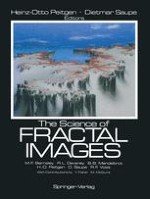This book is based on notes for the course Fractals:lntroduction, Basics and Perspectives given by MichaelF. Barnsley, RobertL. Devaney, Heinz-Otto Peit gen, Dietmar Saupe and Richard F. Voss. The course was chaired by Heinz-Otto Peitgen and was part of the SIGGRAPH '87 (Anaheim, California) course pro gram. Though the five chapters of this book have emerged from those courses we have tried to make this book a coherent and uniformly styled presentation as much as possible. It is the first book which discusses fractals solely from the point of view of computer graphics. Though fundamental concepts and algo rithms are not introduced and discussed in mathematical rigor we have made a serious attempt to justify and motivate wherever it appeared to be desirable. Ba sic algorithms are typically presented in pseudo-code or a description so close to code that a reader who is familiar with elementary computer graphics should find no problem to get started. Mandelbrot's fractal geometry provides both a description and a mathemat ical model for many of the seemingly complex forms and patterns in nature and the sciences. Fractals have blossomed enormously in the past few years and have helped reconnect pure mathematics research with both natural sciences and computing. Computer graphics has played an essential role both in its de velopment and rapidly growing popularity. Conversely, fractal geometry now plays an important role in the rendering, modelling and animation of natural phenomena and fantastic shapes in computer graphics.
